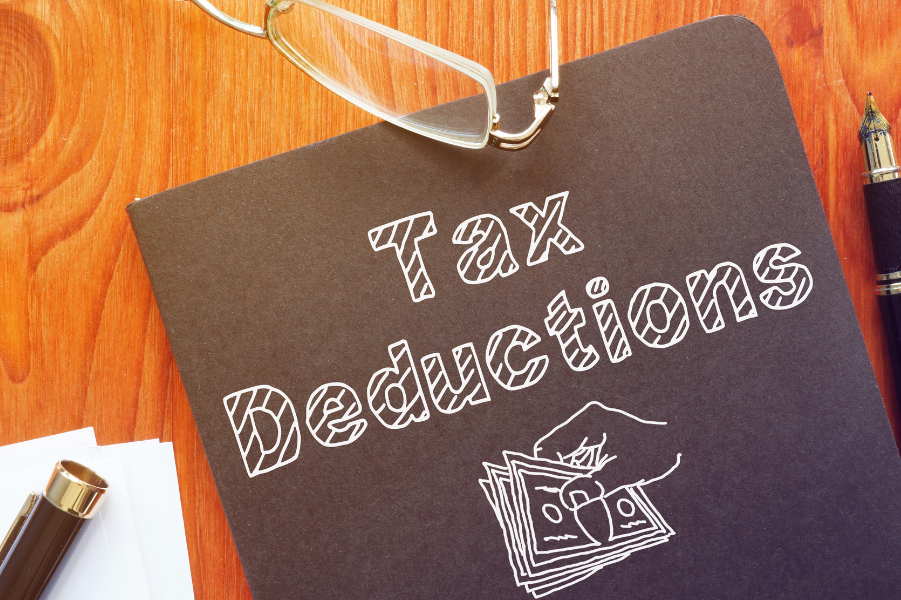The US tax code is very complex, and there are several important factors to understand when running a business or business in order to avoid missing out on tax savings opportunities. Among them, Section 179 deductions and bonus depreciation are important tools for effectively utilizing assets and minimizing taxes. You may be able to combine the Section 179 deduction and bonus depreciation and claim both deductions in the same tax year. This time, we will explain these deductions.
Section 179 Deduction
Section 179 deductions are a way for businesses to purchase new assets and use those assets as deductions on their income tax returns. Specifically, the cost of some or all of the purchased assets can be deducted on income taxes for that year. Below are the main points about Section 179 deductions.
Eligible Asset
To be eligible for the Section 179 deduction, apply to property used for your business purposes. Eligible assets eligible for the Section 179 deduction apply to Section 1245 assets. Examples include office furniture, fixtures, and equipment, vehicles (with a gross vehicle weight greater than 6,000 lbs.), computers, and off-the-shelf software (software that is not customized and is generally available). Both new and used purchases are eligible. If the limit is not exceeded, you can deduct 100% of the eligible asset in the year of purchase.
The conditions for eligible assets are as follows.
・50% or more of the target assets are used for business.
・It must have been purchased by the management from a third party.
(Assets acquired through gifts or inheritance, or assets acquired through purchases from business associates or relatives are not eligible. )
・It is not an asset leased to another party.
・The assets must not be used outside the United States.
Dollar Limit
There is an annual limit on the amount of the Section 179 deduction that can be used on that year’s income tax return. The Section 179 deduction limit for 2023 is $1,160,000. In addition, the maximum purchase price for Section 179 assets that are put into use in one year is $2,890,000 in 2023. Therefore, the dollar limit will be adjusted if it exceeds $2,890,000.
<Example>
In 2023, John purchased $2,950,000 of Section 179 property. This purchase amount is $60,000 more than the dollar limit of $2,890,000. Therefore, John must increase his dollar limit to $1,100,000 ($1,160,000 – $60,000).
Business Income Limits
After applying the dollar limit, the total cost of property that may be expensed with a Section 179 deduction for any tax year cannot exceed the total amount of your taxable income that you get from the active conduct of any trade or business, including any salary or wages from other jobs you (or your spouse) may have.
Therefore, Section 179 deductions do not generate any net loss.
Bonus Depreciation
Bonus depreciation is a way to quickly write off the value of newly purchased assets. This deduction is special in that it allows a portion of the asset’s value to be used as a deduction in the first year rather than regular depreciation. Below are the main points of bonus depreciation.
Eligible Asset
Bonus depreciation is allowed for assets that were put into use before January 1, 2017 and have a modified accelerated depreciation (MACRS) useful life of 20 years or less. For example, equipment, computers, vehicles, office furniture, etc. Bonus depreciation applies only to newly purchased assets. Does not apply to second-hand assets.
Depreciation Rate
In 2023, up to 80% of the purchase price of assets put into service can be depreciated, and the remaining 20% of the asset cost can be depreciated over several years.
The 100% depreciation of the covered assets expired on December 31, 2022. Unless the law changes, over the next few years bonus depreciation will be phased out as follows:
2022年:100%
2023年:80%
2024年:60%
2025年:40%
2026年:20%
2027年:0%
No Limit
While Section 179 deductions have deduction limits and business income limits, bonus depreciation has no such limits. Therefore, bonus depreciation can be used to generate a net loss.
Note
IRS regulations require that you apply Section 179 deductions first, followed by bonus depreciation.
In California, the maximum deduction allowed under Section 179 is $25,000. The deduction limit is reduced if the purchase price of all Section 179 property placed in service during the tax year exceeds $200,000.
California does not allow Section 179 expense elections for off-the-shelf software (software that is not customized and is generally available).
California does not comply with federal bonus depreciation.
Summary
Under the U.S. tax code, Section 179 deductions and bonus depreciation are important tax saving tools for businesses. By taking advantage of these deductions, you can utilize your assets effectively and minimize your taxes. The Section 179 deduction applies to eligible property for business use and is subject to annual limits. Bonus depreciation is a method of rapidly depreciating the value of newly purchased assets, with no limits and the ability to generate a net loss.
Getting the most out of both deductions requires proper planning and detailed knowledge. Also, be aware that different rules may apply depending on the region, especially in California. To minimize your taxes, it is very important to seek advice from a tax advisor or professional. Be sure to plan carefully and be compliant when taking advantage of these deductions to avoid missing out on solid tax savings.




Comment